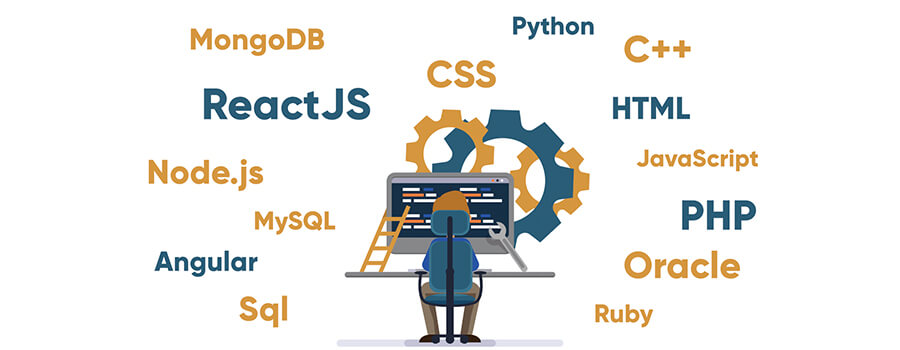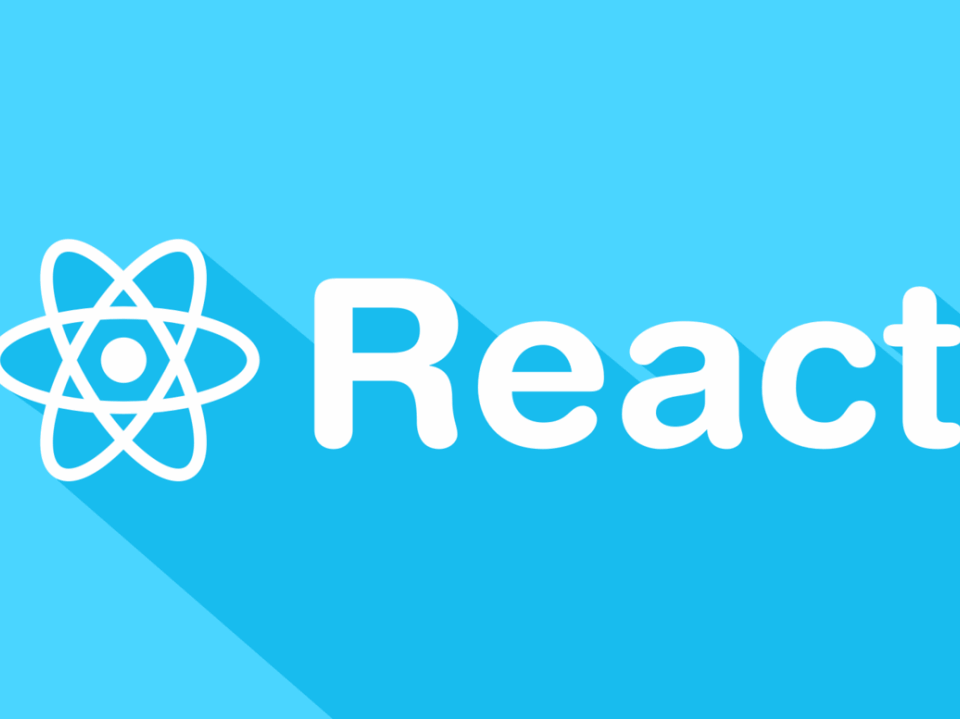
The Importance of UI/UX Design
11th June 2020
12 Techniques of Website Speed Optimization
16th June 2020Full Stack Development, as the name suggests, is the combination of both frontend and backend portions in the life of a web application.
Full Stack Development is the need of the hour for every firm out there that wishes to build good web applications and creative websites.
The web development process has three key layers:

- Presentation layer: Deals with the frontend part to create the user interface
- Database layer: Deals with the data storage operations such as fetching, storage, and modification
- Logic layer: Deals with handling all data validation and logical operations in the backend part of the interface
Each of these layers requires an expert working diligently to bring together a complete web application. However, having multiple people working on these aspects will create a lot of complexity and add to the monetary expense of the company. Therefore, these days, the majority of the companies are looking for Full Stack Developers who can handle working with multiple stacks at ease.
Who is a Full Stack Developer?
A Full Stack Developer is an engineer who is proficient in working with both server-side and client-side programming software. Everything from frontend development languages, backend development methodologies, server handling, Application Programming Interface (API) designing to working with version control systems are what makes a Full Stack Developer who he is.
This is the primary reason how the name ‘Full Stack’ came into the picture in the world of web development. If you are wondering about the level of proficiency a Full Stack Developer must-have in all of these technologies, let me tell you that the developer is asked to translate user requirements and create architectures based on that and help in the implementation of the projects. Genuine interest is more of a requirement here than an in-depth understanding of all the tools.
Why would you need a Full Stack Developer?
There are multiple reasons why a Full Stack Developer has a lot of importance in a company. Here are some of the key reasons:
- Full Stack Developers ensure to keep the end-to-end web application running without any hiccups.
- Full Stack Developers can fit into multiple roles in the application development process, thereby greatly reducing the costs and time required to solve problems.
- Full Stack Developers can actively debug applications, alongside development, and also extend help in testing and actively developing contingency protocols for the application.
Full Stack Development Technologies
Frontend Development
The frontend part of a website or a web application is the one that the user can see when using the application. It is directly responsible for the user experience as the person using it directly interacts with it when required.
There are multiple programming languages and frameworks that are used to build the frontend section of a website or a web application. Some of them are as shown below:
Frontend Programming Languages
HTML: Hypertext Markup Language (HTML) is a combination of hypertext and markup language as the name suggests. Hypertext is used to denote and define a link between multiple webpages at an instance. A markup language is used to organize text in a structured format by making use of functional units called ‘tags,’ which form the foundation of HTML.
CSS: Cascading Style Sheets, also called CSS in short by developers is a very cleanly written language that is used to add styling to a website using a simple syntax. The main advantage of CSS is that it does not have a tight-knit dependency on the native HTML surface and can independently be applied to each of the webpages as developers desire.
JavaScript: JavaScript, one of the most famous programming languages in the early part of the previous decade is used to add functionality to a website. An action for a click of a button, for example, is a very simple use of JavaScript. Performing mathematical operations to having the ability to create and showcase games and other web-based applications on the website are some of the key features of JavaScript.
HTML, CSS, and JavaScript work hand-in-hand most of the time to drive the best frontend experience the developers can provide users.
Frontend Libraries and Frameworks
AngularJS: AngularJS is a widely used open-source front-end framework, which is primarily used in the design and development of single-page applications (SPAs). Angular has a huge community of developers, and with every iteration in the software, it ensures to provide better ways to help the Full Stack Developers create better websites and applications.
Bootstrap: Bootstrap is another open-source framework that forms as a primary go-to tool for developers who want to build responsive websites and web applications. Due to its immense potential, it has seen quick growth ever since its inception in the market.
React.js: React.js is another extremely popular JavaScript library used to build user interfaces for websites. It is free and open-source and was developed by the workforce at Facebook. It is mainly used for component building as it provides an efficient and quick way to do the same.
jQuery: jQuery is an open-source library that is used to ease the difference of working between JavaScript and the combo of HTML and CSS. jQuery is used for various tasks such as event handling, Ajax interactions, and cross-browser development activities.
Backend Development
Backend as the name suggests mainly deals with servers and their role in the process of building and using a website or a web application. The primary responsibility here is to ensure the smooth working of all of the database technologies implemented by using query languages and allowing for client-side interaction by making use of Application Programming Interfaces (APIs).
The following are some of the important frameworks, libraries, and languages used for backend development:
Python: Python is one of the widely used languages for backend development. It provides multiple sub-frameworks that are used to build upon, alongside a simple syntax that makes it a perfect choice for Web Development.
PHP: PHP is a famous server-side scripting language primarily used to run on web servers to perform a plethora of activities to keep the backend functioning effectively.
Node.js: Node.js is another popular runtime environment that supports the running of JavaScript code outside the native browser platform. It is key that you need to know that it is neither a programming language or a framework but a runtime. Its primary functions include designing and developing APIs like mobile apps or even web apps.
C++: C++ is one of the modest widely used general-purpose programming languages. It is used to complement other frameworks and work alongside them to effectively help manage backend activities in the web development process.
JavaScript: The advantage of JavaScript is that it can be used as both a frontend and a backend programming language where it provides developers with respective advantages in terms of code reusability and modular development.
There are many other backend programming/scripting languages such as C#, GoLang, Ruby, and more.
Databases in Full Stack Development
A database can act as a primary collection of data and can double up as an efficient channel to work with the data by performing various operations such as the insertion, deletion, and modification of data and the retrieval of the updated data.
Following are some of the most widely used databases when it comes to web applications and website building:
Oracle: Oracle is a one-stop-shop for all the database requirements. It is very efficient and easy to use and lets developers query the required information and work with the database server easily.
MongoDB: MongoDB is a famous NoSQL data type being implemented these days. NoSQL basically translates to a non-relational database model for storage. Due to this, there are no table-based entities that provide a better storage mechanism and an efficient model for quick and easy data retrieval.
MS SQL: MS SQL has been a champion of databases for quite some time now and it sure is popular amongst the developers who have a requirement for relational database models and the techniques that follow.
Servers in Full Stack Development
Servers are sometimes referred to as the ‘heart’ of a web application. There are multiple servers to choose from, and two of the most popular choices are mentioned below:
Nginx: Nginx is a very popular server tool that acts as an HTTP and a reverse proxy server. It can also double up as a mail proxy server and also as a TCP/UDP proxy server.
Apache: Apache is the most used platform out there for this purpose. It provides programmers with a high-level abstraction when working with MapReduce. It also provides a high-level scripting language called Pig Latin, which is used to develop data analysis programs.
Popular Stacks in Full Stack Development
MEAN Stack: The most popular stack out there. It includes working with MongoDB. Express, AngularJS, and Node.js.
MERN Stack: The MERN stack is widely used among startups and even in some Fortune 500 companies. It includes MongoDB, Express, ReactJS, and Node.js.
Django Stack: The Django stack is well revered among Python users and MySQL Database developers.
Rails or Ruby on Rails: Another popular stack, Rails uses Ruby, PHP, and MySQL for complete operation in the Full Stack Development environment.
LAMP Stack: LAMP is in implementation for a while now, and it has earned a good reputation among developers. LAMP consists of Linux, Apache, MySQL, and PHP for development.
How to choose a Tech Stack for Full Stack Development?
Well, with so many tools out there and multiple stacks being in the market as a requirement for Full Stack Development jobs, what are some of the tips you can use to choose a web technology stack?
Project requirements: It always pays well to understand the project complexity, duration, and the budget when picking up a technology stack. For projects that are on the conservative side, Python or Node.js serves as a really good tool. Working the way up, it becomes completely based on the product requirement as technologies directly correspond to helping developers with a goal. Similarly, for projects that are complex, it is important to understand every aspect of the requirement, break it down into simple chunks, analyze it, and then pick up the right technology to work with.
Scalability: Scalability is something that is kept in consideration when starting with a project to ensure that there is a structured pipeline for future expansion and growth. Regardless of how quick the growth is or how diverse the requirements are for scaling an application or a web platform, it is imperative that developers assess various technologies and their offerings before honing in on the technologies that cater to the exact requirement.
So, what do social media companies like Instagram and Facebook use for their Full Stack requirements?
Here are some of the tools that Facebook and Instagram implement:
Programming languages: PHP, Python, and C++
Databases: MongoDB, Cassandra, MySQL, PostgreSQL, MariaDB, and HBase
Frameworks: PHPFox, Ruby on Rails, Tornado, and Diaspora
JavaScript libraries: Yoga, Relay, React, and Flux
Do note that, alongside the Full Stack Development tools, these big companies also try to enhance the working of their web applications and websites by making use of concepts such as Machine Learning and Deep Learning to implement Artificial Intelligence as well.





